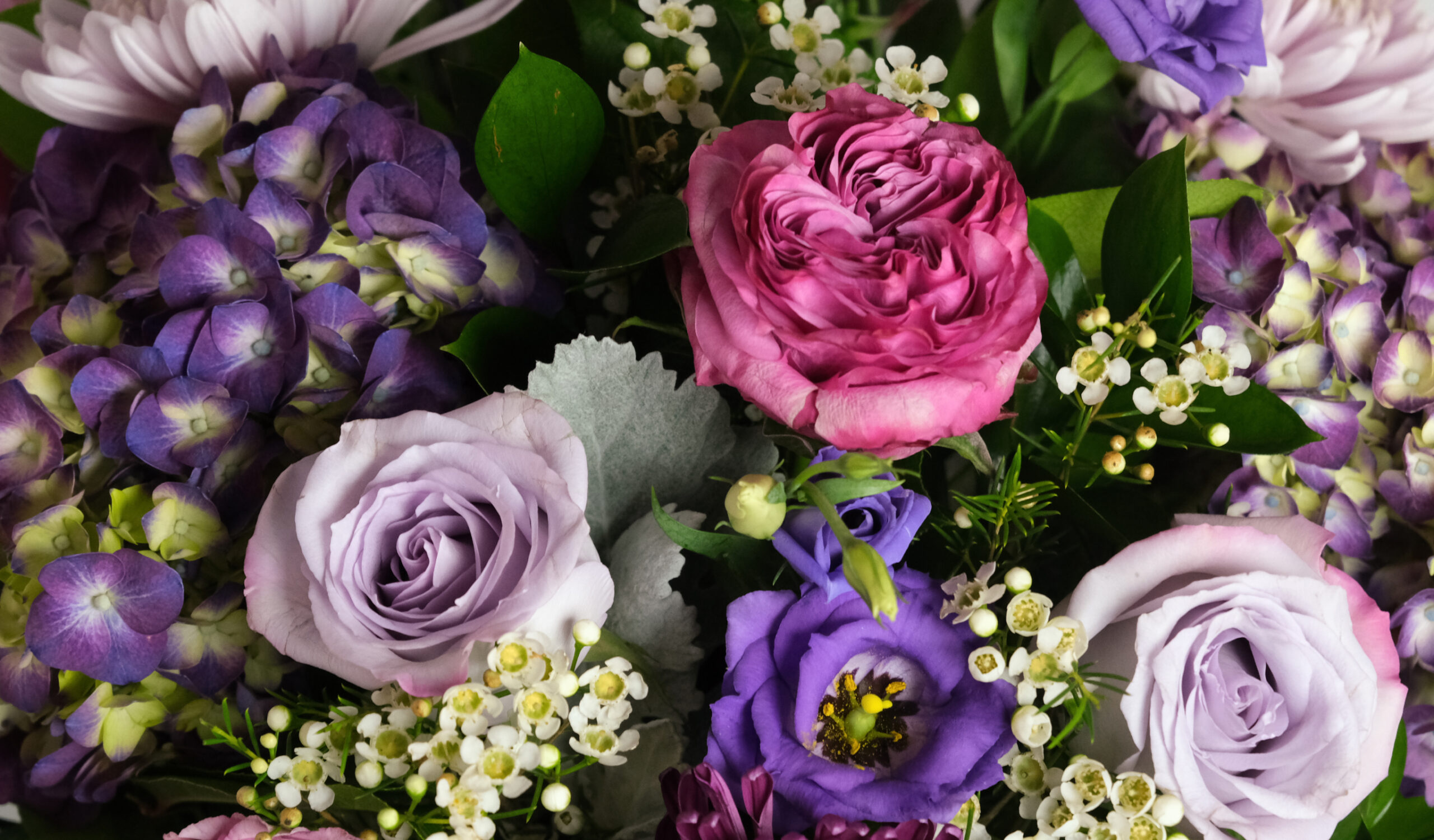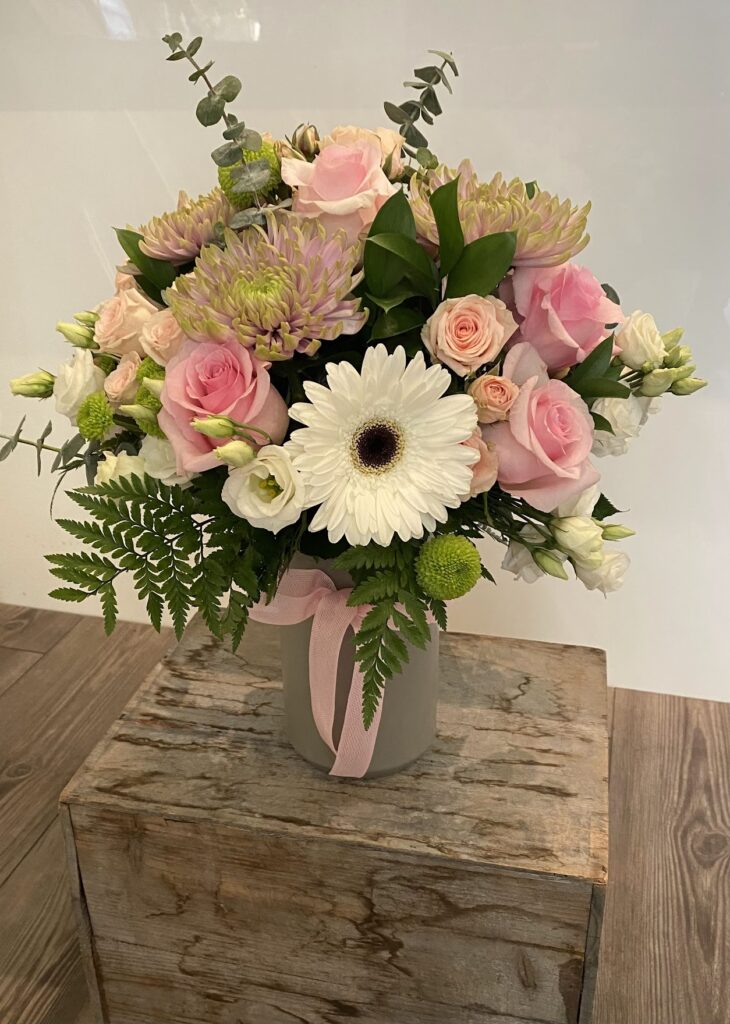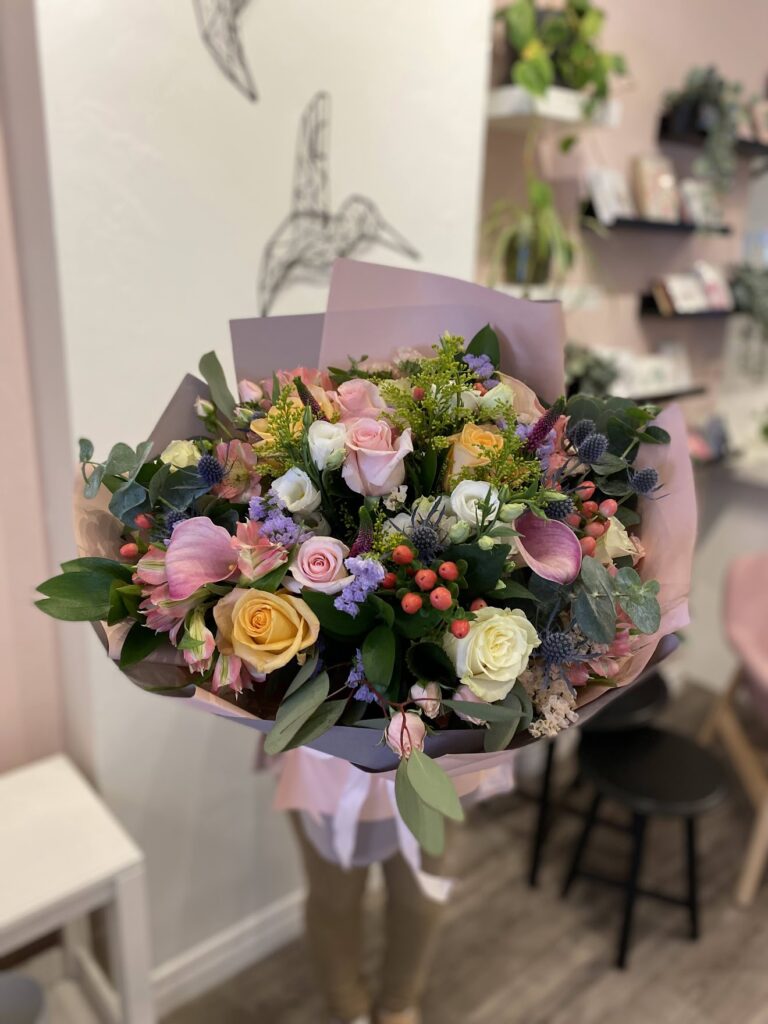
Care & Maintenance
Care of vase flower Arrangements
Removing your floral arrangement from the packaging and filling up the vase with tepid water. Displaying it away from direct sunlight and drafts such as heating and air conditioning. Add water daily to ensure longevity.
Our goal is to provide you with the best possible service and highest quality flowers. If you need further instructions or have any questions about how to maintain your flowers, please contact our team!


Care of fresh cut bouquets
Keep the bouquet in a cool place away from direct sunlight and drafts, such as heaters using a clean vase filled three-quarters with tepid water and enclosed floral preservative. Remove water tubes and packaging from the bouquet, leaving the green tie intact.
We make an effort to use the best product that is readily available. Please feel free to contact our team if you need more details or have any queries about how to maintain the beauty of your freshly cut bouquet. Please get in touch with us within 24 hours if there are any issues with your flowers.
Care of plants
PHALAENOPSIS ORCHID
Phalaenopsis thrive in a climate similar to our own in terms of temperature. On average, it should be between 60 and 65 °F at night and 75 to 85 °F during the day.
Phalaenopsis can thrive in indoor environments with normal lighting, with indirect sunlight being the most beneficial. Care should be used when planting a Phalaenopsis in the sun because the leaves are sensitive to excessive sun exposure and can quickly burn.
Water it sparingly and frequently enough to maintain a constant moisture level just below the medium’s surface, but be careful not to overwater. Watering your plant once a week is usually plenty to keep it happy and healthy.
Phalaenopsis prefer a humid atmosphere, with a humidity level of 55-75% being optimum. You can enhance moisture by setting your plant over a tray or dish of water. To raise the height of your plant and prevent it from sitting in the water, place pebbles or tiny stones between the pot and tray.
Using a high-nitrogen fertilizer at a rate of 1 teaspoon per gallon of water can yield positive benefits all year. Give your plant a monthly feeding. Less is more in this case. So be careful not to go overboard.
Plants need to be moved into a larger pot every other year since they grow upward rather than outward. The base of the bottom leaf at the surface of the medium works well with medium-grade wood bark until the new roots are well-established, water sparingly.

We can help you with your care & maintenance needs
